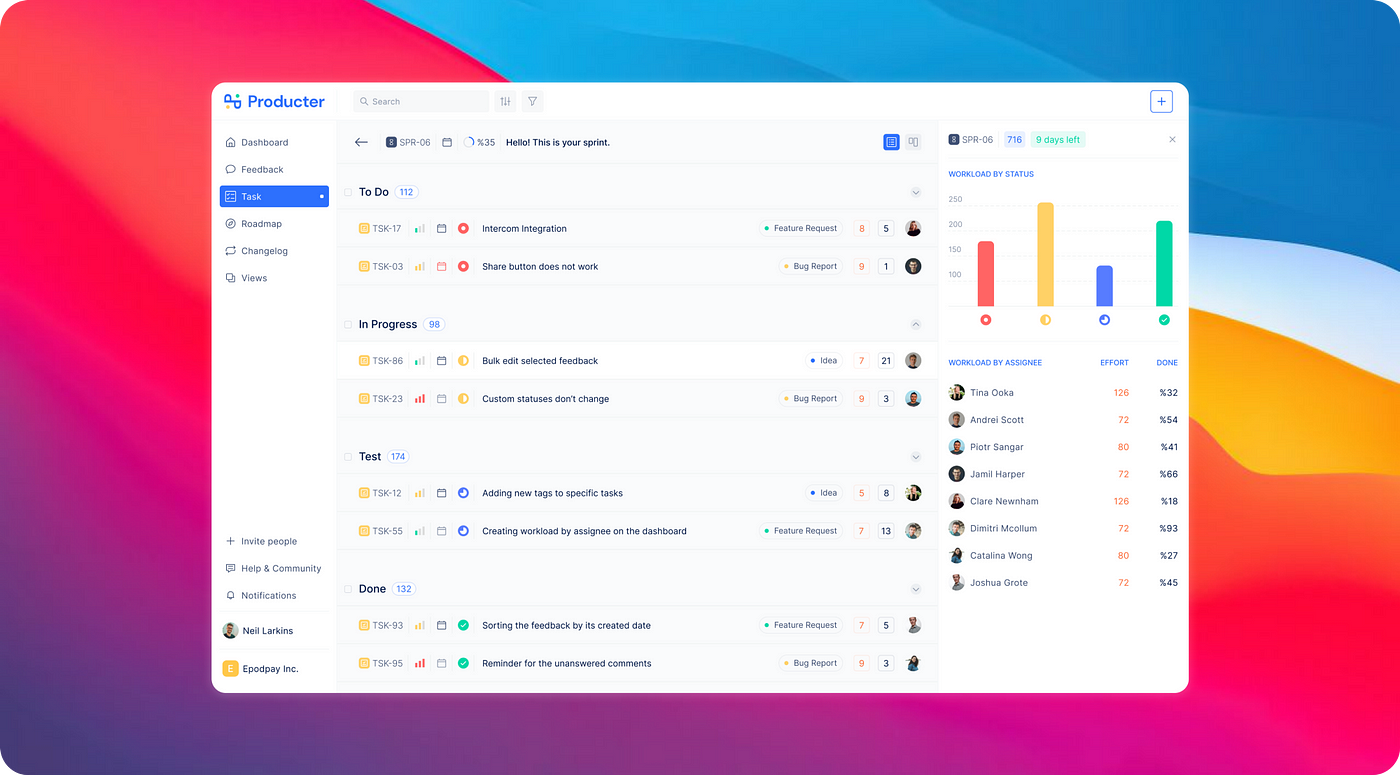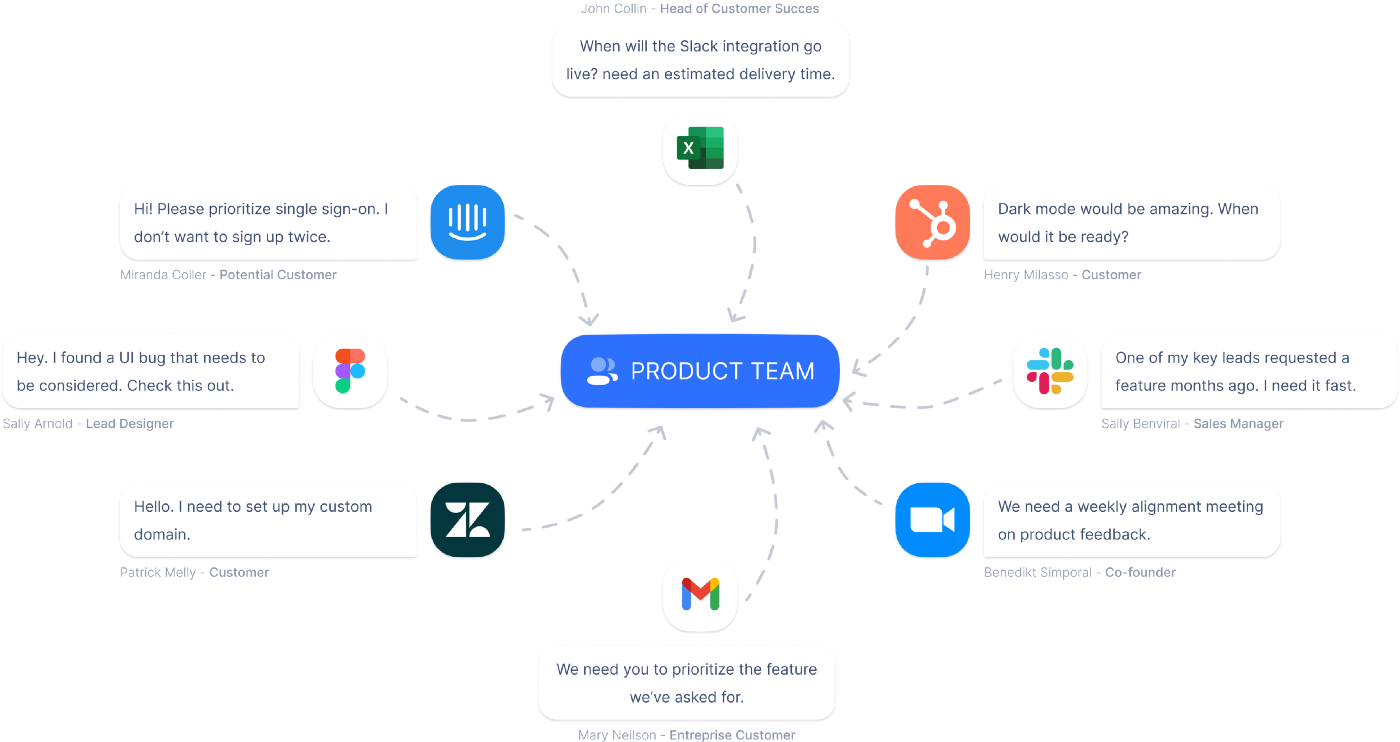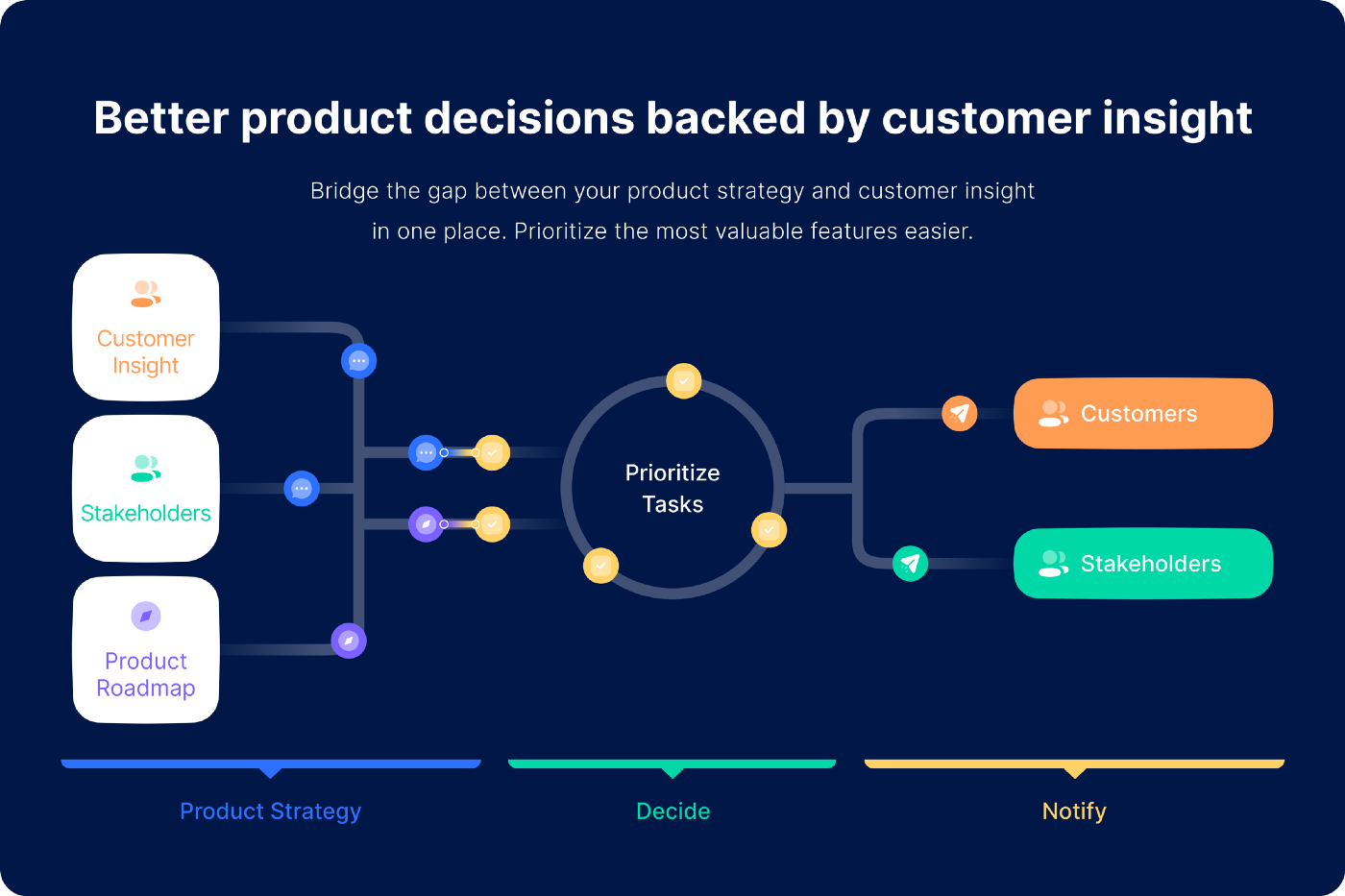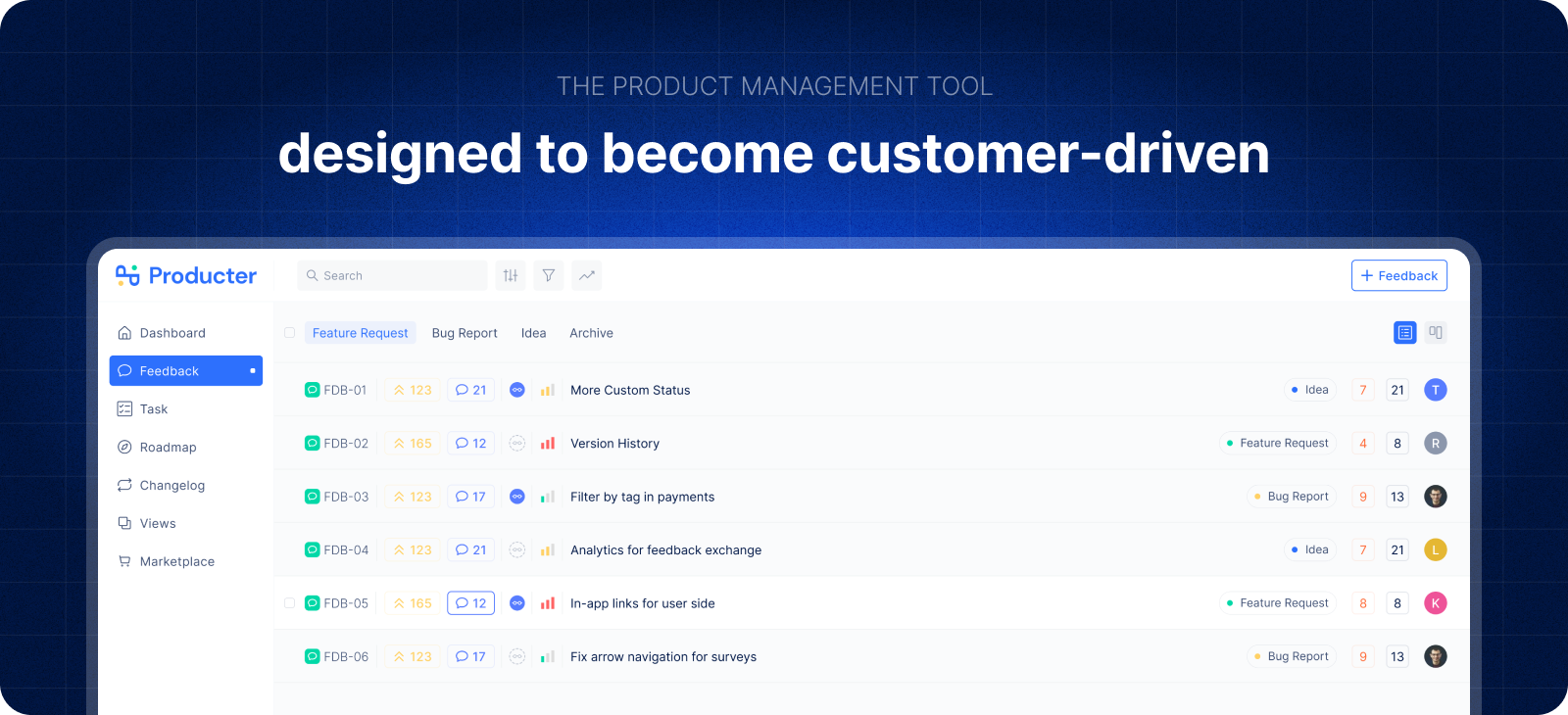Producter is an all-in-one product management tool helping customer-oriented companies make informed decisions and build what the users love.
(The motto: Product OS powered by customer insights 🚀)

Ikigai
As a previous freelance product designer, I had the opportunity to work with at least 10 product teams. They all had their own methods of doing things due to their unique cultures. This presented the truth and the problems with different patterns in the product management vertical.
Towards the end of 2020, I put the Ikigai diagram in front of me to find a SaaS idea. What the world needs, what I love doing, what makes money, and what I’m good at — an idea that has no value but that I can make very valuable!
Digital products have taken up a large slice of my life almost every day for the last five years. My Ikigai output and a daily problem intersected here.
The Problem & Target Audience
We were working together on the same product team with Merve in our previous job. The customer-facing teams were providing a lot of feedback to us. Handling customer feedback along with day-to-day operations became nearly impossible.

Spreadsheets stretched to infinity, and many other tried solutions did not give us what we wanted. On top of that, we tried to invite the customer-facing teams to the JIRA board. Trust me; it turned out to be a disaster…
Looking back, we realized that the numerous tools we tried weren’t really putting customers’ feedback first. Trello, Jira, Asana, ClickUp, or any similar tool was not designed for customer-focused product management. That’s why there isn’t any concept of the customer.
It is also vital that we keep in mind that projects have a beginning and a deadline. Instead, products are typically sustainable and constantly improved, so they must be handled that way for success!
Over time, we realized that project management tools that weren’t designed for product companies couldn’t deliver the right experience to our non-technical teammates or users.
The urge to act
Product management tools are also available in the market. We were aware of this. Instead of closing our eyes or ignoring it, it gave us a better understanding of where these tools were lacking and where Producter should be positioned.
It was important for us not to fall in love with the idea. We conducted over 100 interviews, almost every evening, for three to four months, with dozens of product teams working in different markets and business models, and with people from all different roles.
And the three things we noticed were:
- Even though the personas differ, we all want to listen, segment, and create products our users are willing to pay.
- We may be part of technical or non-technical teams, but we work for the same product. So we should have a shared vision and goal for the company.
- “There are non-technical departments in Trello, and we use Jira for the software team.” It kills the product managers between the two structures while setting and pursuing the product vision. In companies that realize this, this sentence is long gone. A shared playground for both tech and non-tech teams is a must!
Continuously Updated Results
There is only one reason for this title. Today, Producter is not what it was on its first day. This change can be attributed to the precisely targeted and segmented feedback we have received from our customers, starting from day one.
We give the formula of how to become a product-led company to our users when we say, “First, become a Producter to become a product-led company.” Hear the voice of your users and show them you do listen and value them. This helps you decrease the churn rate, a significant increase in product usage rate. Plus, active growth will be the biggest payoff.
It’s very straightforward: the customer is the beginning and end of the story. Get the customer input and notify once the feedback is live on the changelog. Producter both close the feedback loop for product companies and starts it again at that point.

It is too early to share, but I would like to give you a glimpse of what we aim:
There is Salesforce for Sales CRM. Shopify is the first thing that comes to mind when someone mentions e-commerce. There is Zendesk for the customer service software. And we all know and use Figma to create our designs. There are leaders across a variety of verticals.
How about the product management vertical?
This is exactly what I want you to consider. It is still unclear who the primary leader is in the product management vertical. From our perspective, there are only three candidates who can be viewed as prominent leaders. And, nope, Productboard is not one of them :) (If you are curious about the topic, please feel free to contact me.)
Merve will continue the series in the next blog post, “How We Built Our Early Stage Growth Strategy.”
Producter is a product management tool designed to become customer-driven.
It helps you collect feedback, manage tasks, sharing product updates, creating product docs, and tracking roadmap.






